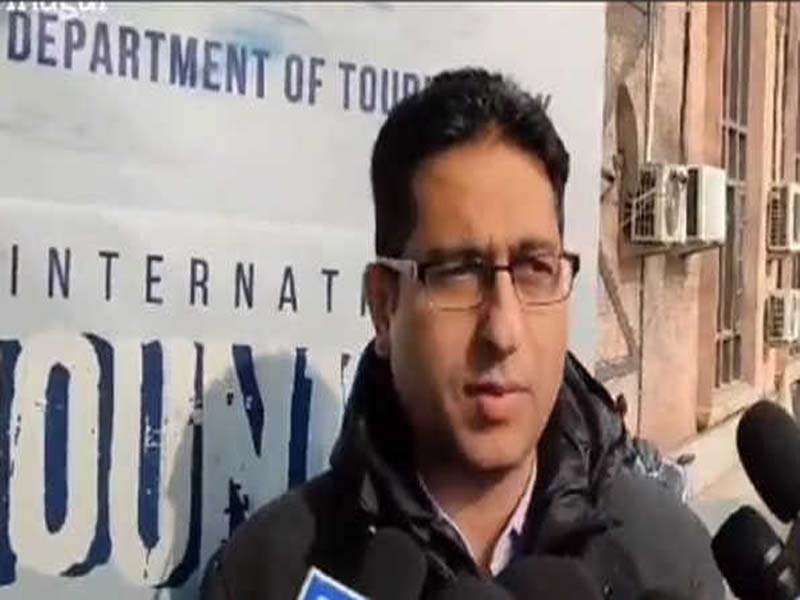A Kashmiri guy works for a living by spending hours in frigid waters to extract lotus stems.
SRINAGAR ,28 NOVEMBER: To make a living and feed his family, Muhammad Shafi Rather toils away for hours in the frigid waters of Anchar Lake plucking Lotus stems.
With one hand, he balanced himself by holding a tiny boat; the other, he used to fish for lotus stems in the lake, collecting, cleaning, and bunching them for sale.
Every household in Kashmir Valley historically uses lotus stem, sometimes referred to as “Nadru,” to make a variety of delicacies for special occasions. Lotus root is a type of aquatic root vegetable that is creamy white in colour, porous, and shaped like a long, over 4-foot stalk.
Shafi has been operating this firm for more than 15 years. Due to family obligations and poverty, he was unable to pursue his education past the tenth grade.
“My uncle compelled me to get married so that mother could be helped with household duties when my father passed away while I was in seventh grade, and then I started travelling to the lake to extract Lotus stems for sale,” .
The Nelumbonaceae family includes the herbaceous perennial water plant known as the lotus. One of the curiosities of Kashmir valley is a lotus stem, locally called as “Nadru” in Kashmir and “Kamal Kakdi” in India. It thrives in the valley’s ponds and the shallow areas of lakes including Dal Lake, Wular Lake, Mansar Lake, and Anchar Lake.
Although a costly delicacy, lotus stems are a popular ingredient in many Kashmiri recipes. Nearly every part of this plant is consumed in the majority of Asian nations, but just the stem and its seed are in demand here in the valley.
“My family’s only source of income is the sale of Lotus Stem. It is a successful business that also includes nutritional components “explained Shafi.
In addition, potassium, phosphorus, copper, iron, manganese, thiamine, pantothenic acid, zinc, vitamin B6, vitamin C, and fibre are found in Lotus stem, according to nutritional experts.
Shafi stated that maintenance is required throughout the year, but particularly in the summer, for the floating Lotus Stem garden. The area’s water should continue to be as pure as possible. According to him, the area must always be cleared of algae and decaying leaves from June through September in order for the stem to grow healthily throughout that time.
He claimed that in order for the floating area to flourish, it must be left unattended from September to October. A lot of people are drawn to these floating locations by the water body with lotus flowers and broad leaves, which depicts a captivating vision of nature.
According to him, Lotus cultivation starts in October and lasts through the winter.
Shafi claimed that in order to stay active while extracting the Lotus stems in cold weather, one must descend underwater on an empty stomach.
According to Shafi, “Lotus farming is a highly demanding and arduous work, thus the price of the stem could have been considerably greater than what we are obtaining at the moment. He claimed that a bouquet of Lotus stems costs between Rs 200 and Rs 350.
In Kashmir, it is used to make a variety of dishes, including chips, cutlets, and a well-known street meal called (nader-monje).
As a special dish for Nowruz, the Iranian New Year, “Nadruyakhni” is made with moong dal, one of the culinary highlights of Kashmiri cuisine, and fish, which together make a typical valley dish.(PHN)








